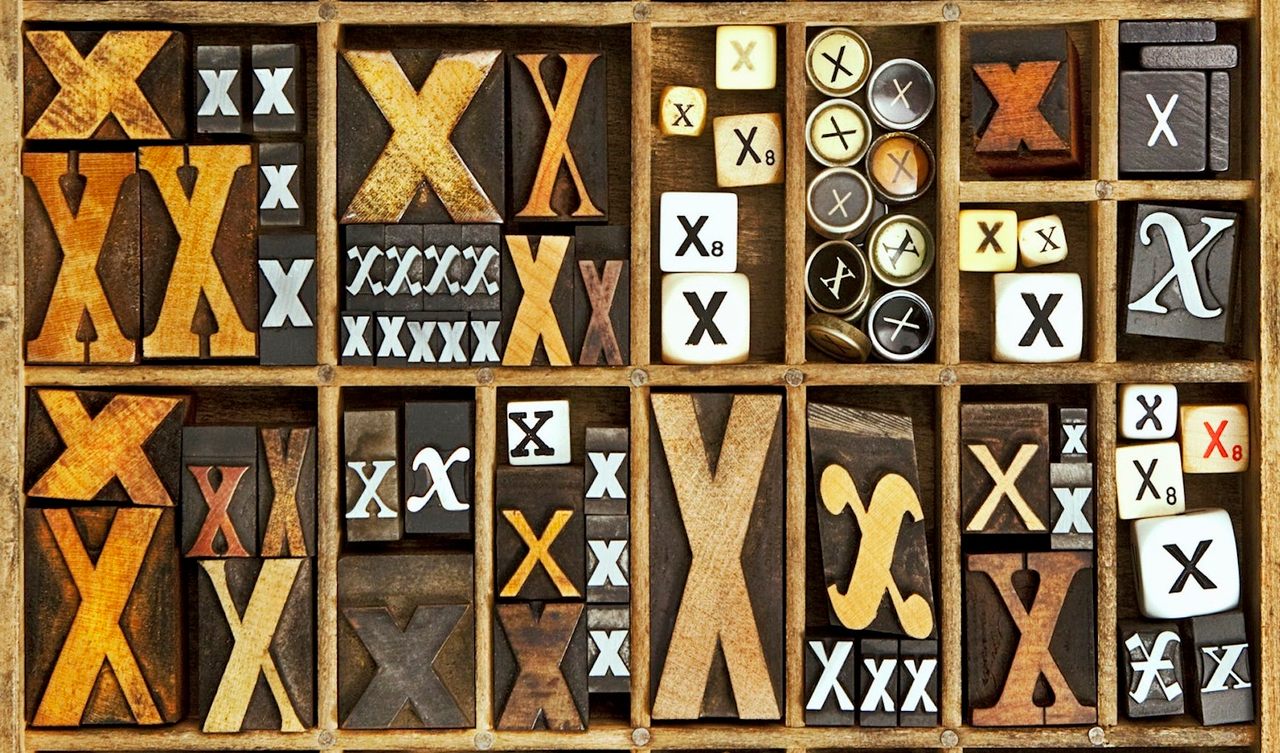Have you ever stumbled upon a number puzzle that just sticks in your mind? Perhaps you've seen a question like "x*x*x is equal to 2024" floating around online, and it sparked your curiosity. It’s a pretty common kind of brain teaser, you know, one that makes you pause and think about how numbers work. This isn't just some random math problem; it actually taps into some interesting ideas about how we figure out numerical relationships. It's about finding a specific value that, when multiplied by itself three times, gives us a particular result, which in this case, is the year 2024.
This kind of question, really, is asking us to find the cube root of 2024. It’s a fundamental concept in mathematics, and it pops up in all sorts of places, from calculating volumes to understanding growth rates. People often get curious about these sorts of numerical challenges, especially when they involve a current or recent year like 2024, making the problem feel a bit more relevant and, well, timely. So, it's not just a dry math exercise; it's a little mystery to solve, and that can be quite fun, actually.
In this article, we're going to break down exactly what "x*x*x is equal to 2024" means. We'll explore how to approach this kind of problem, whether 2024 is a special kind of number in this context, and how you can figure out the value of 'x'. We'll look at a few ways to get to the answer, from simple estimation to using a calculator for a precise result. So, let's get into it and see what we can discover about this intriguing numerical question, shall we?
- Fry99cc
- Filmyfly Com 2024
- Movierulz Today Kannada 2025
- 9xmovies Downloadhub Full Movie Download
- 5movierulz 2024 Download Kannada
Table of Contents
- What Does "x*x*x is Equal to 2024" Really Mean?
- Is 2024 a Perfect Cube? Let's Find Out!
- Calculating the Value of X
- Beyond the Numbers: Why This Puzzle Matters
- Quick Answers to Your Questions
What Does "x*x*x is Equal to 2024" Really Mean?
When you see "x*x*x is equal to 2024," it's a mathematical way of asking for a specific number. That number, often called 'x', needs to be multiplied by itself, and then that result is multiplied by 'x' one more time. This operation, where a number is multiplied by itself three times, is what we call "cubing" a number. It's pretty straightforward, really, and it's represented mathematically as x3. So, in simpler terms, the question is asking: "What number, when cubed, gives you 2024?"
This is a bit different from finding a square root, which is when you multiply a number by itself just twice. Cubing, or finding a cube root, involves three instances of the same number. It's a common concept in geometry, for instance, where you might use it to figure out the volume of a cube-shaped object. If a box is perfectly cubic, and its volume is 2024 cubic units, then 'x' would be the length of one of its sides. So, you know, it has practical applications too.
The Basics of Cubes and Cube Roots
Let's think about some simple examples to get a better handle on this. For instance, if you take the number 2 and cube it, you get 2 * 2 * 2, which equals 8. So, the cube root of 8 is 2. If you take 3 and cube it, you get 3 * 3 * 3, which is 27. So, the cube root of 27 is 3. It's just the opposite operation of cubing, a bit like how subtraction is the opposite of addition. Finding the cube root is about reversing the cubing process. We are, in a way, trying to undo the multiplication to find the original number.
This idea of finding the "root" of a number is really important in math. It helps us solve equations and understand how different quantities relate to each other. When we're looking for 'x' in "x*x*x is equal to 2024," we're essentially trying to find that base number that was multiplied by itself three times to arrive at 2024. It's a fundamental step in understanding higher-level algebra and geometry, so it's a good concept to get a grip on, you know?
Is 2024 a Perfect Cube? Let's Find Out!
A "perfect cube" is a number that you get by cubing a whole number. For example, 8 is a perfect cube because it's 2 cubed (2*2*2). Similarly, 27 is a perfect cube because it's 3 cubed. So, the big question for "x*x*x is equal to 2024" is whether 2024 itself is a perfect cube. If it were, then 'x' would be a nice, neat whole number. If it's not, then 'x' will be a decimal number, and probably one that goes on for quite a while, which is something we often call an irrational number.
To figure this out, we can try a couple of methods. One way is to just estimate and see if we can find whole numbers that, when cubed, are close to 2024. Another, more precise method, involves something called prime factorization. That's where you break down a number into its smallest prime building blocks. It's a rather useful technique for this kind of problem, you'll see.
Estimating the Cube Root of 2024
Let's make some educated guesses. We know that 10 cubed (10*10*10) is 1000. And 20 cubed (20*20*20) is 8000. So, 'x' must be somewhere between 10 and 20. That's a pretty good start, isn't it? Now, let's try some numbers in between.
- 113 = 11 * 11 * 11 = 1331
- 123 = 12 * 12 * 12 = 1728
- 133 = 13 * 13 * 13 = 2197
Looking at these results, 12 cubed (1728) is less than 2024, and 13 cubed (2197) is greater than 2024. This tells us right away that 2024 is not a perfect cube. If it were, 'x' would be exactly 12 or exactly 13, or some other whole number. Since it falls between these two, we know 'x' is going to be a decimal value somewhere between 12 and 13. It's a pretty clear indicator, actually.
The Prime Factorization Method
Prime factorization is a more systematic way to check if a number is a perfect cube. It involves breaking down a number into its prime factors. A prime factor is a prime number (like 2, 3, 5, 7, etc.) that divides the original number exactly. For a number to be a perfect cube, all its prime factors, when grouped, must appear in sets of three. So, for example, if you factorize 8, you get 2 * 2 * 2. That's a set of three 2s, so 8 is a perfect cube. If you factorize 27, you get 3 * 3 * 3, which is also a perfect set of three.
Let's try this with 2024:
- Start by dividing 2024 by the smallest prime number, 2: 2024 ÷ 2 = 1012
- Divide 1012 by 2: 1012 ÷ 2 = 506
- Divide 506 by 2: 506 ÷ 2 = 253
So far, we have 2 * 2 * 2 * 253. We have a group of three 2s, which is good. Now we need to look at 253. Is 253 divisible by 3? No, because 2+5+3 = 10, which isn't divisible by 3. Is it divisible by 5? No, it doesn't end in 0 or 5. How about 7? 253 ÷ 7 is not a whole number. What about 11? Ah, 253 ÷ 11 = 23. And 23 is a prime number itself. So, the prime factorization of 2024 is 2 * 2 * 2 * 11 * 23. You see, it's pretty neat how it breaks down.
For 2024 to be a perfect cube, all its prime factors would need to appear in groups of three. We have a group of three 2s (23), which is great. But then we have 11 and 23, each appearing only once. For 2024 to be a perfect cube, we would need two more 11s (113) and two more 23s (233). Since we don't have those, 2024 is definitely not a perfect cube. This confirms our earlier estimation; the value of 'x' will not be a whole number, which is just how these things sometimes work out.
Calculating the Value of X
Since 2024 isn't a perfect cube, finding 'x' in "x*x*x is equal to 2024" means we're looking for an approximate value. In most real-world situations, you'd use a calculator for this. While it's good to understand the underlying math, getting a precise decimal value without a calculator is incredibly difficult and time-consuming. It's a bit like trying to measure a tiny speck of dust with a yardstick, you know? You need the right tool for the job.
Using a Calculator for Precision
To find the cube root of 2024 using a calculator, you'll typically look for a button that looks like √3 or x1/3. You'd input 2024, then press that cube root button. The result you get will be a decimal number. If you use a standard calculator or an online tool, you'll find that the cube root of 2024 is approximately 12.646. This means that if you multiply 12.646 by itself three times (12.646 * 12.646 * 12.646), you'll get a number very, very close to 2024. It might not be exactly 2024 due to rounding, but it will be pretty darn close.
This kind of calculation is, you know, quite common in science and engineering. When you need a precise measurement or a specific value for a design, a calculator is indispensable. It takes the guesswork out of it and gives you the accuracy you need. For most people, this is the most practical way to answer the question of what 'x' is when "x*x*x is equal to 2024."
Why X Isn't a Whole Number
As we saw with our estimation and prime factorization, 'x' for "x*x*x is equal to 2024" is not a whole number. It's an irrational number. What does that mean? Well, an irrational number is a real number that cannot be expressed as a simple fraction (a/b) where 'a' and 'b' are integers and 'b' is not zero. When written as a decimal, an irrational number goes on forever without repeating any pattern. Pi (π) is a famous example of an irrational number, and so is the square root of 2. The cube root of 2024 is another one of these. It's a pretty interesting concept, actually, how some numbers just don't fit neatly into fractions.
This means that no matter how many decimal places you calculate, you'll never reach a point where the digits repeat or stop. It's an endless, non-repeating sequence. So, when we say 'x' is approximately 12.646, we're giving a rounded value, because the true number extends infinitely. This is just a natural part of how numbers work, and it's something mathematicians have been exploring for centuries. It's rather fascinating, if you ask me, that some numbers just can't be perfectly captured with a finite set of digits.
Beyond the Numbers: Why This Puzzle Matters
While solving "x*x*x is equal to 2024" might seem like a straightforward math problem, it actually touches on bigger ideas. It's a great example of how we use mathematical operations to solve real-world puzzles, or even just satisfy our own curiosity. This kind of problem-solving is a fundamental skill, whether you're building something, analyzing data, or simply trying to understand the world around you. It encourages a systematic way of thinking, which is pretty valuable, you know?
The fact that 2024 is the number in question also makes it a bit more relatable. It’s the current year, or was very recently, so it connects a mathematical concept to something tangible in our lives. It shows that math isn't just abstract; it's everywhere, even in the calendar. Learning how to approach these kinds of numerical challenges helps us develop a stronger grasp of quantitative reasoning, which is a skill that comes in handy in countless situations, from personal finance to scientific research. It's really about building a solid foundation for understanding numbers, and that's always a good thing.
This article, for instance, draws on a wide range of information, much like the diverse content found across various online platforms and communities. Just as people share knowledge on sites like Zhihu or discuss interests on Reddit, we gather and process details to answer questions like this one. It’s a bit like how different pieces of information, whether about online trends or mathematical puzzles, come together to form a more complete picture. So, you know, the way we access and process information is pretty broad these days.
Quick Answers to Your Questions
People often have a few specific questions when they encounter a problem like "x*x*x is equal to 2024." Here are some common ones, with straightforward answers:
What is the cube root of 2024?
The cube root of 2024 is approximately 12.646. This means that if you multiply 12.646 by itself three times (12.646 * 12.646 * 12.646), the result will be very, very close to 2024. It's not a whole number, which is pretty typical for cube roots of numbers that aren't perfect cubes. So, you know, it's a decimal value.
Is 2024 a perfect cube?
No, 2024 is not a perfect cube. A perfect cube is a number that results from multiplying a whole number by itself three times (like 8, which is 2*2*2, or 27, which is 3*3*3). We found that 12 cubed is 1728, and 13 cubed is 2197. Since 2024 falls between these two numbers, it cannot be the cube of a whole number. This means its cube root is an irrational number, which is just how it is sometimes.
How do you calculate cube roots without a calculator?
Calculating cube roots without a calculator can be a bit tricky, especially for numbers that aren't perfect cubes. For numbers like 2024, you can start by estimating. Find whole numbers whose cubes are just below and just above your target number. For 2024, we saw that 123 is 1728 and 133 is 2197, so the cube root is between 12 and 13. For a more precise answer without a calculator, you'd typically use methods like numerical approximation (like the Newton-Raphson method), which involve iterative calculations. These methods are pretty complex for manual computation, so for most practical purposes, a calculator is the way to go. It's a bit like trying to build a house with just a hammer, you know, you need more tools for the complex bits.
So, there you have it! The puzzle of "x*x*x is equal to 2024" leads us to a fascinating journey into cubes, cube roots, and the nature of numbers themselves. It's a good reminder that math is all around us, waiting to be explored. We hope this explanation has helped you figure out this numerical mystery and maybe even sparked a bit more interest in the world of numbers. If you're curious to learn more about mathematical concepts or explore other intriguing numerical problems, feel free to look around our site!
Related Resources:



Detail Author:
- Name : Mrs. Celine Erdman PhD
- Username : hhegmann
- Email : imaggio@gmail.com
- Birthdate : 2001-10-30
- Address : 97975 Parisian Union Suite 531 North Karina, WA 17507-1102
- Phone : 307.266.8823
- Company : Farrell, Corkery and Wintheiser
- Job : Agricultural Crop Farm Manager
- Bio : Totam non suscipit earum voluptates. Aut laboriosam est aut est reprehenderit. Dignissimos consequatur consequatur nihil corporis accusantium optio velit.
Socials
linkedin:
- url : https://linkedin.com/in/margot_real
- username : margot_real
- bio : Dolorem culpa doloribus voluptatem sit quia.
- followers : 5333
- following : 955
tiktok:
- url : https://tiktok.com/@margot_xx
- username : margot_xx
- bio : Cumque ipsam molestiae hic officiis molestiae maxime qui.
- followers : 490
- following : 743